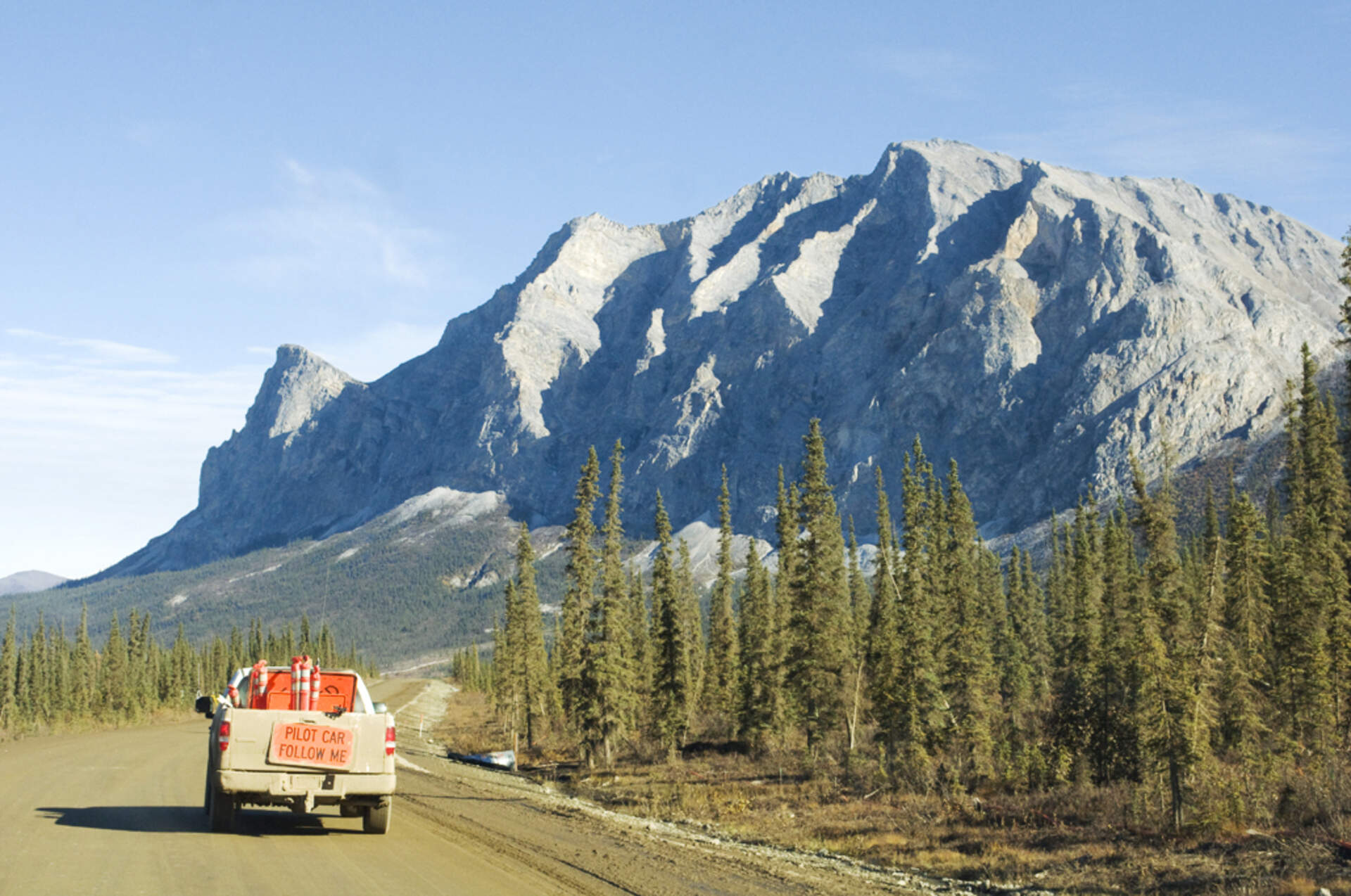
Viktoria Ciostek , Dalton Highway Construction Pilot Car, 2012; giclee on paper; Courtesy of the Artist
Bridging the Great Divide: Landscape from Tradition to New Media
Past
Feb 14, 2014 - Jun 1, 2014
In a landscape the visible horizon divides the sky and all things above the earth’s surface from the terrestrial plain. Many traditional landscape paintings make use of this basic distinction to define their composition. At the dawn of the twentieth century new technologies such as still photography and film allowed artists to explore landscapes in new and different ways. Today, New Media artists use these and other technologies to explore ideas that are beyond the scope of tradition, opening up new areas of inquiry. This exhibition examines works in varied media that tell us about the American landscape and how it defines us.
The exhibition was inspired by the book The Garden in the Machine: A Field Guide to Independent Films about Place by Scott McDonald. The author argues that the American landscape is the dominant issue in American art and literature. Clearly, this declaration holds true for Charles Burchfield and many of his contemporaries. It is also true that many of the structuralist filmmakers of the second half of the 20th century created work that embraced nature and the wilderness in both a geographical and historical manner. Hollis Frampton, Stan Brakhage, and Larry Gottheim, to name a few, all use the wilderness and place to reveal the natural beauty that remains amidst changes in culture and progress. What is revealed is the landscapes and horizons that are often dismissed among the complexities of modern civilization that can appear invisible in contemporary society.
The Great Divide can be understood in multiple ways. Victoria Ciostek’s Dalton Highway Construction Pilot Car, 2012 depicts what seems to be an idyllic landscape with a truck passing through a mountain pass on a blue sky day. In reality, beyond the pass the beautiful nature of the landscape completely dissolves leaving nothing but a maze of metal and machinery. The Dalton Highway, also known as the North Slope Haul Road, is a 414-mile stretch of road in northern Alaska. Built to support the transport of supplies to the Prudhoe Bay oil fields at its terminus and the great Trans-Alaska Pipeline System that it parallels, it is one of the most isolated and dangerous roads in the United States. Allan M. D'Arcangelo’s Untitled #3, 1965 and A.J. Fries’s Route 33, 2012 also depict roadways. In D'Arcangelo’s work the landscape is reduced down to flat planes of color, reminiscent of the signs that line our streets. In Fries’s work the landscape is seen through the windshield of a car, made more evident by the water pushed by the windshield wipers moments before into the upper left part of the painting.
In other works the horizon is moved to the top or bottom of the piece. Lin Xia Jiang’s Wrapped House II, 1991 and D'Arcangelo’s Untitled #3 focus mostly below the horizon, with a small bit of sky receding off in the distance. Other works such as George Campos’s Skyscapes, from 1986, Ann Stievater’s undated Green Storm Clouds, and Norma Doherty’s undated Industrial Niagara are dominated by the sky. The horizon is pushed to the bottom part of the picture focusing mostly on the vast sky above.
John Opera’s Birds I, 2006 and Brendan Bannon’s Port Harcourt, Nigeria, 2007 both contain birds, but to dramatically different effect. Opera’s photo was shot in the Alabama Swamps in Medina, New York. The picture captures a fleeting moment when a great flock of Canadian geese rises to flight above the swamps. The print was made directly from the negative, reflecting the immediacy of the experience, but also reflecting larger registers of cosmic time in the starry sky above. Bannon’s photo was shot in Port Harcourt, Nigeria. This time the birds are hovering over a massive pile of garbage as it is being burned and pushed into the Bonny River below.
Pictures by Alexis Jean Fournier, Virginia Cuthbert and Joe Miller represent a more traditional approach to landscape. These oil paintings depict pastoral scenes and cityscapes. Paul Sharits’ s I’Specchi (the Mirrors) 1979-80, shown here for the first time since 1985, is a three projector slide installation focused on the horizon and the incredible streaks of light across the sea and cloud structures above it that Sharits observed while on sabbatical in Possitano, Italy, during the winter of 1980. While Fournier’s Changing Pastures, c.1918 depicts cows grazing in a field, Larry Gottheim’s film Fog Line, 1970 takes a different approach to a similar pastoral scene. To compliment I’Specchi’s quick paced flashing of light and sound, Fog Line silently and patiently moves from a morning fog to reveal a green placid landscape whose horizon is interrupted by high tension wires that intrude into the modern wilderness.
Tullis Johnson, Curator and Manager of Exhibitions
Don Metz, Associate Director, Public Programs